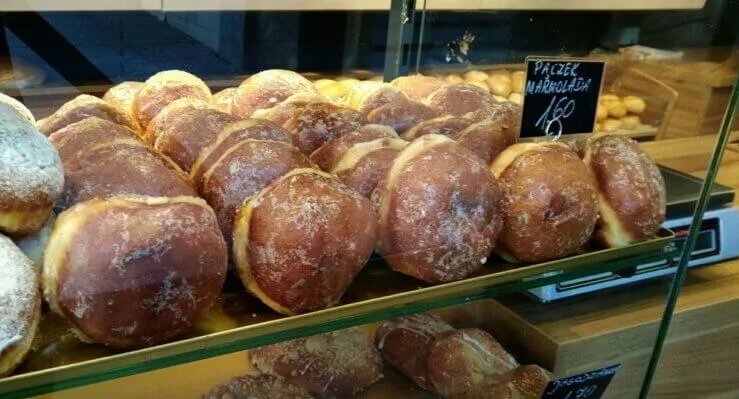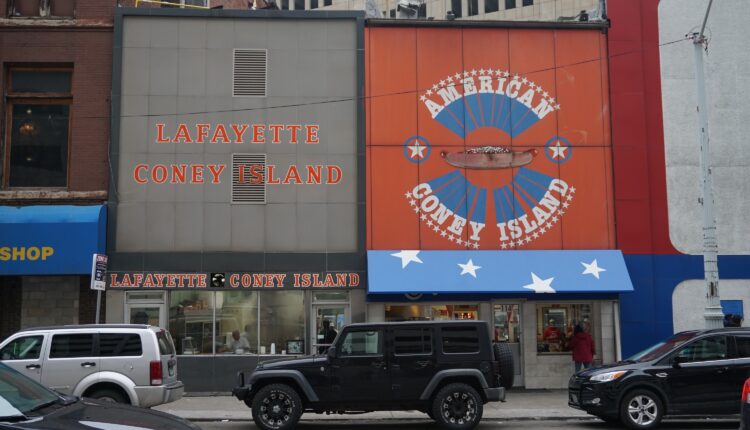
Detroit’s Polish suburb of Hamtramck is known for its tasty paczki. (MichaIPL via Wikimedia Commons)
As Michiganders, we put onions on hot dogs, olives on hamburgers, and snack on Polish donuts in February. But have you ever wondered why? In our Michigan Moments: Food series, we’re checking out the history behind iconic Michigan foods and beverages.
MICHIGAN—Though it may come as a surprise to you, food from the Midwest might be considered unusual by our coastal neighbors. Midwestern cooking often combines culinary traditions from our families’ immigrant backgrounds, locally grown and produced ingredients, and the foods of Indigenous tribes.
And in Michigan especially, our home cookin’ includes provisions that were concocted, bottled, and packaged by mitten-state entrepreneurs. If you’re curious about the history of some of your favorite foods and beverages, read on to discover how Michigan history creates Michigan culture.
Paczki
Near the end of February, you can walk into any Kroger or Meijer and find a delightful display of paczki (pronounced POWNCH-key)—filled Polish pastries that resemble jelly donuts. Paczki are made from a brioche-like dough and filled with fruit preserves like raspberry, lemon, strawberry, apple, and custard.
But why do we take one day out of the year to chow down on pastries with a difficult pronunciation?
Michigan is big on paczki because we have a thriving population of Polish immigrants who migrated here near the turn of the 20th Century. Although you can find these pastries on Fat Tuesday from Maryland to Illinois and beyond, Detroit’s Polish suburb of Hamtramck may put out more than the rest.
Many people in Poland observe the Catholic Lent, which is traditionally 40 days of fasting and avoiding rich foods such as sweets and butters. Ash Wednesday is the first day of Lent, and the day before that is Fat Tuesday—when Polish bakers try to sell the last of their rich foods that cannot be eaten over Lent.
Leading up to Fat Tuesday, Polish bakeries like those in Hamtramck became famous for selling treats like paczki. The tradition only expanded when more Polish immigrants came to Detroit following World War II.
By the 1980s, Kroger, Meijer and other grocery stores started lining the shelves with paczki, officially making Fat Tuesday a holiday that everyone—Polish or not—could enjoy. Those are tasty, but if you want some truly authentic paczki from the metro Detroit area, be sure to check out Eater Detroit’s paczki map.

What’s the best restaurant in Grand Rapids?
Calling all food lovers! The ‘Gander’s second annual Grand Rapids Food Guide is open for nominations. And this year, we’re starting by asking you,...

14 Michigan scholarships for students of color
Attending college can be expensive, but these Michigan scholarships for students of color make getting an education more affordable. After the...

Beloved Lafayette Coney Island reopens after rat infestation
Historic Detroit eatery Lafayette Coney Island reopens after addressing health concerns. A beloved Detroit institution, Lafayette Coney Island, has...

10 restaurants in Michigan with jaw-dropping views
These restaurants in Michigan serve up spectacular sights alongside your meal. Michigan is a state known for its stunning landscapes, so it only...

Michigan is the country’s top producer of these 7 foods
Michigan is an agricultural powerhouse. From tart cherries to squash, the Mitten State is the nation’s leading producer of seven common food...






